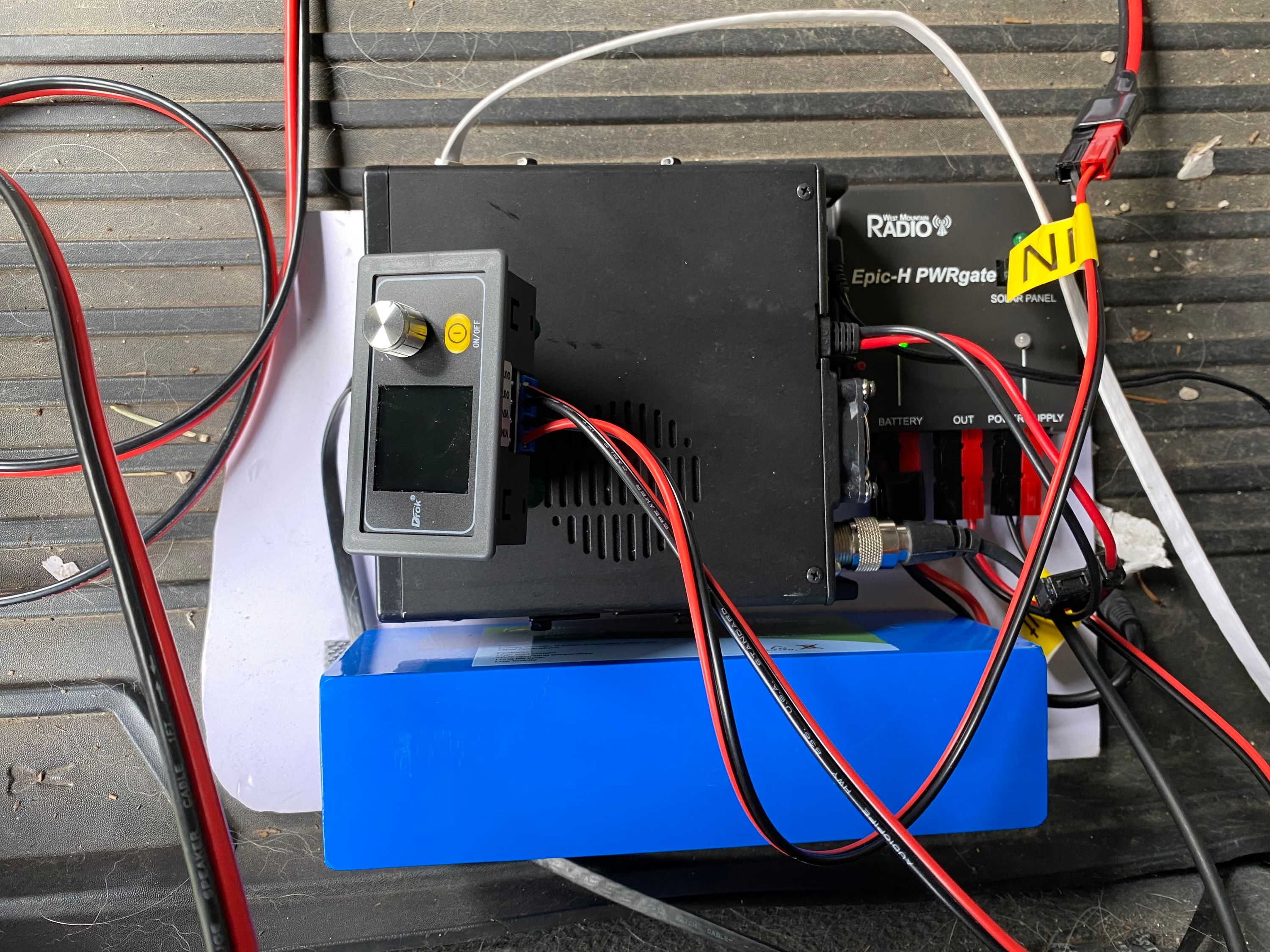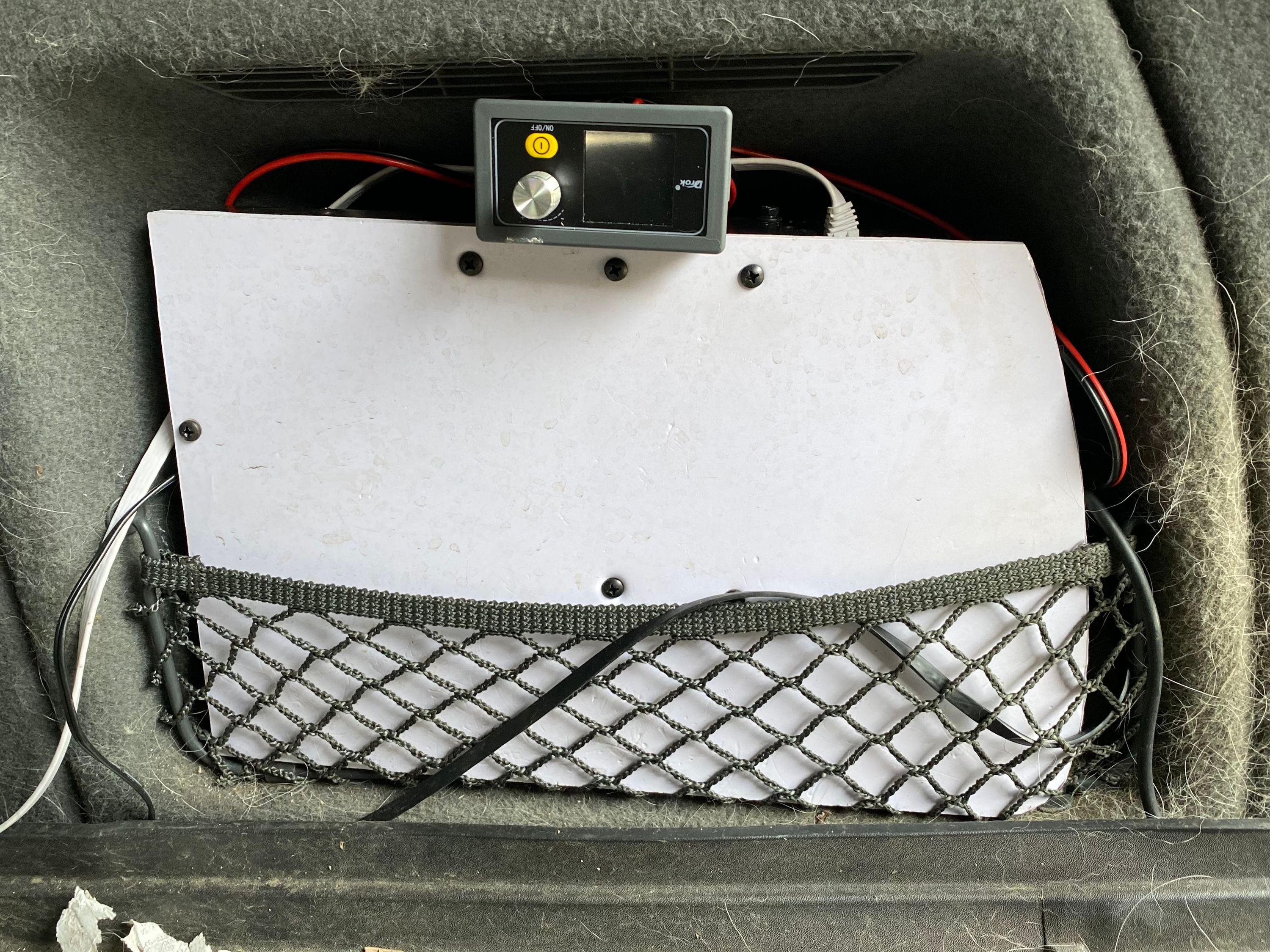Mobile VHF/UHF Installation
My goals for a mobile radio installation are:
- 100% reversible - no holes, nothing permanently mounted.
- Easily removable, so that it’s simple to pull the radio out of the car and operate it in a pinch, or simply move it to another vehicle, or pull it just to reduce the risk that a parking attendant or someone will fiddle with the radio.
- leave room for passengers and dogs
My first mobile installation was just a Kenwood TM-V71A I put in an ammo can, with the control head placed in a convenient spot nook on the console, and a mag mount antenna. Power was provided by a 20AH SLA battery which I’d recharge periodically.
That worked fine but recharging the battery was a hassle, so I added a LLPG (low loss power gate) and a connection to a convenient 12VDC outlet. That meant the radio was powered by the car most of the time (idle, receiving) and the power demand of transmitting was fielded by the battery, which was then trickle charged by the LLPG. That was an improvement, and I moved the ammo can to the wayback of the car and it worked fine except requiring me to periodically recharge the battery because I’d left the radio on or otherwise drained the battery beyond the ability of the trickle charger to set it right.
The downsides of this arrangement were:
- the SLA battery is heavy, so moving the ammo can around is a bit of a pain.
- the ammo can took up space in the wayback, and annoyed the dogs.
- the weight of the whole schmear meant it was a pain to pull it from the car when I wanted.
- the LLPG trickle charge was just not enough to keep up, so eventually the battery would be dead.
- the lifespan of SLA batteries that get drained pretty far down is abysmal. I’ve replaced the battery twice.
So I’ve been meaning to upgrade the whole arrangement. The car has a cubby in the wayback which is more or less the right volume for all the gear if I pack it pretty tight. So my plan was to build a unit that held the radio chassis, a West Mountain Epic Powergate, and a Bioenno 15AH LiFePO4 battery. That would be smaller, lighter, and more usable battery capacity than the SLA battery of the ammo can, plus the Epic Powergate and LiFePO4 battery would allow charge rates up to 5 amps, so the whole system would recover during a modest drive of an hour or so.
Given the current supply chain issues getting all the bits here has been a challenge but I got it all done. One unforeseen hitch is that to completely recharge an LiFePO4 battery, you need a voltage of about 14.5VDC - higher than the alternator gives me. I solved that problem with a boost converter bought on Amazon.
The boost converter did generate some issues. The first one I got was rated for 4 amps. I set the current limit at 4 amps, output voltage at 14.5 volts, hooked it all up and let it fly. The boost converter lasted about two minutes before it overheated and the magic smoke escaped. Fooey.
The next one I ordered worked great but is too large for my application.
It’ll happily output 10A, though, so I imagine I’ll find some similar application for it soon.


Finally I bought a smaller one, equipped with a fan and a thermal cutoff. Some careful experimentation got me to a setting of 2.6 amps and a steady state temp that seemed conservative. Given the battery capacity of 15AH, that’ll take the battery from empty to full in 5.8 hours, not quite fast enough to suit me so I guess I’ll fiddle around with that some. I’m guessing if I goose it up to 3.5A it will be ok.
The bigger issue, really, is what duty cycle I can run the radio at and have the whole system not steadily lose ground. It’s difficult to imagine a scenario where the duty cycle goes above 50%. Power consumption on receive is about 1A Power consumption transmitting at full power is about 11A. At a 50% duty cycle, that’s an average of 6A, so at a 50% duty cycle it will lose ground. The battery lists the acceptable charge rate at 2-5A, so I don’t want to go above 5A if I can help it. A charge rate of 3.5A gives me a sustainable duty cycle of 25% transmit 75% receive. That’s at high power for the TM-D710G radio, which is 50W. Medium power (transmit power 10W) is specified at 5.5A, low power (tx power 5W) is <4A.